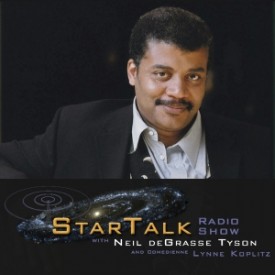E=mc²: We’ve all heard of it. But what does it mean?
Einstein’s Big Idea, a film from the PBS Nova series, attempts to shed a little light on Albert Einstein’s equation by breaking it down into its component parts and telling a story behind the development of each one. Narrated by actor John Lithgow, the film is based on David Bodanis’s 2000 bestseller E=mc²: A Biography of the World’s Most Famous Equation. It premiered in 2005, the 100th anniversary of Einstein’s Annus Mirabilis–the “miraculous year” when the 26-year-old patent clerk published five papers within a six-month period that would revolutionize 20th century physics. Among those five were Einstein’s paper outlining what later became known as the Special Theory of Relativity, and a short follow-up paper deriving his formula for the equivalence of mass and energy, which he first stated as m=E/c².
Does Einstein’s Big Idea actually explain the equation? Alas, no. Not even close. Apparently, the filmmakers’ “big idea” was that they might be able to evoke empathy among young viewers and stimulate interest in science by portraying Einstein as a rebellious young man with a healthy sex drive. The movie features dramatic depictions of events, not only in Einstein’s early life, but in the lives of several other important figures in the history of science: the 19th century Englishman Michael Faraday, whose extensive experiments and intuitive theories in electricity and magnetism led directly to James Clerk Maxwell’s formal discovery that light was an electromagnetic wave; the 18th century French chemist Antoine Lavoisier, whose discovery of the conservation of mass had to be re-formulated as the conservation of mass-energy in the wake of Einstein’s Relativity Theory; the 18th century French translator of Isaac Newton, Emilie du Châtelet, who used the empirical findings of Willem Gravesande to change Newton’s formula for energy from E=mv to the one favored by Gottfried Wilhelm Leibniz, E=mv²; and the Austrian-born physicist Lise Meitner, whose groundbreaking research into nuclear fission in the 1930s helped confirm the accuracy of Einstein’s equation. Together, the scenes depict the history of science as a romantic struggle of extraordinary individuals against the resistance of lesser minds.
To learn more about Relativity and E=mc², here are some free online resources:
“On the Electrodynamics of Moving Bodies”, Einstein’s famous paper from the June 30, 1905 edition of Annalen der Physik, outlining the Special Theory of Relativity. Available as HTML or PDF.
“Does the Inertia of a Body Depend on Its Energy Content?”, Einstein’s three-page follow-up to the paper above, deriving his famous equation from the principles laid out in the earlier work. It was published in Annalen der Physik on September 27, 1905 and is available online as a PDF.
Relativity: The Special and General Theory, Einstein’s classic guide for the lay reader, written in 1916 and available free in various formats at Project Gutenberg.
The ABC of Relativity, Bertrand Russell’s very accessible 1925 book, available in an abridged audio edition through links in our Feb. 18 post.
Courses on Einstein can be found in the Physics section of our collection of 500 Free Online Courses. And don’t miss Einstein for the Masses, a lecture given by Ramamurti Shankar, Professor of Physics & Applied Physics at Yale.


